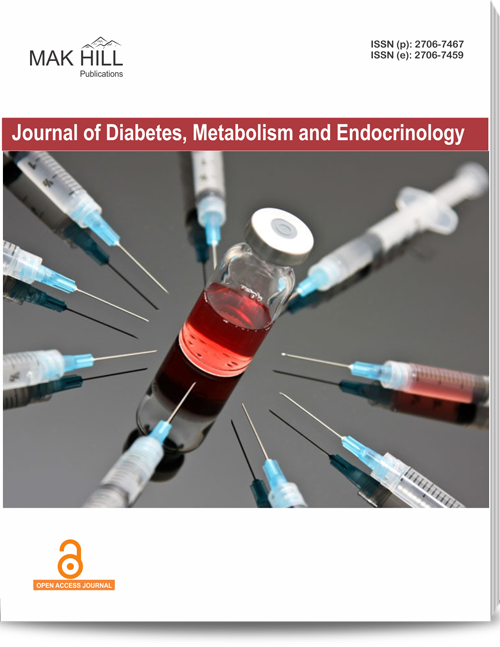
Journal of Diabetes, Metabolism and Endocrinology
ISSN: Online 2708-2717ISSN: Print 2708-2709
Abstract
Glycated Hemoglobin (HbA1c) is now used largely for DM control. Previous studies showed different relationship of HbA1c with White Blood Cells (WBCs) and platelets counts. The aim of this study was to investigate the correlation of glycated hemoglobin with WBCs and platelets counts in non-diabetic Sudanese population. A cross sectional study was conducted during 2016-2018 in Sudan covering Khartoum state, Northern state, Gezira state, Red Sea state and North Darfur state on adults of ages between 20-60 years and not known to be diabetic or suffering from any chronic illness. The 1096 participants were assessed by a questionnaire and physical examination. BMI and BP were calculated by standard scales. A sample of 5 mL venous blood was taken for FBG to exclude DM and measurement of HbA1c using a modified ELISA reader known as Cobas Integra 800 (Roch) machine. A Sysmex KX-21 automated hematology analyzer was used for measuring WBCs and platelets counts. Correlations between the variables were estimated and p<0.05 was considered statistically significant. The mean age of the participants was found to be 25.1±9.2 years with a range of 20-60 years. The overall mean value of HbA1c was 4.6% ±0.9 with a minimum value of 1.2% and maximums of 6.3. At 95% confidence interval the lower bound Mean was 4.5% and the upper bound mean was 4.7%. The reference range of WBCs count in adult Sudanese was 2.9-9.6×103 μL–1 with a median of 5.0×103 μL–1. The reference range of Platelets count in adult Sudanese was (124-465)× 103 μL–1 with a median of 280×103 μL–1. In overall Sudan samples there was no correlation between WBCs and HbA1c (r = -0.041; p = 0.200) but in the samples of North Darfur and Northern states the WBCs count was positively correlated with HbA1c with significant p value (r = 0.185; p = 0.016) and (r = 0.241; p = 0.003), respectively. In this study statistically significant correlation was found between platelets count and HbA1c level (r = 139; p = 0.000). The results suggest that WBCs levels need to be taken into account when using HbA1c levels to screen pre-diabetes or diabetes. Thus, measuring Fasting Blood Glucose (FBG) or performing the Glucose Tolerance Test (GTT) recommended to be considered when diagnosing diabetes or pre-diabetes in patients in the upper normal range of WBCs and close to the diagnostic threshold of HbA1c level. Further, study recommended to be done to investigate the level of WBCs and HbA1c in Diabetic patients with measurement of inflammatory marker to ensure whether the association between WBCs level and HbA1c is mediated through elevated glucose levels is caused by subclinical inflammation. The Mean Platelets Volume MPV values can be an effective marker for blood glucose. This exact scientific phenomenon needs further analysis and researches.
How to cite this article:
Elmutaz H. Taha and Ibrahim A. Ali. Correlations of Glycosylated Hemoglobin with White Blood Cells and Platelets Counts in
Sudanese Non-Diabetics Population.
DOI: https://doi.org/10.36478/jdme.2020.19.23
URL: https://www.makhillpublications.co/view-article/2708-2709/jdme.2020.19.23